-
 Bitcoin
Bitcoin $118500
0.44% -
 Ethereum
Ethereum $3797
2.53% -
 XRP
XRP $3.534
0.68% -
 Tether USDt
Tether USDt $1.000
-0.03% -
 BNB
BNB $765.6
2.37% -
 Solana
Solana $191.4
6.23% -
 USDC
USDC $0.9997
-0.02% -
 Dogecoin
Dogecoin $0.2691
6.92% -
 Cardano
Cardano $0.8842
3.73% -
 TRON
TRON $0.3140
-1.78% -
 Hyperliquid
Hyperliquid $46.96
3.06% -
 Stellar
Stellar $0.4821
2.50% -
 Sui
Sui $3.984
0.49% -
 Chainlink
Chainlink $19.83
2.16% -
 Hedera
Hedera $0.2821
2.25% -
 Avalanche
Avalanche $25.75
3.02% -
 Bitcoin Cash
Bitcoin Cash $527.3
-0.10% -
 Shiba Inu
Shiba Inu $0.00001556
2.68% -
 Litecoin
Litecoin $118.3
0.39% -
 UNUS SED LEO
UNUS SED LEO $8.984
-0.24% -
 Toncoin
Toncoin $3.328
2.13% -
 Polkadot
Polkadot $4.544
1.69% -
 Uniswap
Uniswap $10.43
-1.28% -
 Ethena USDe
Ethena USDe $1.001
-0.02% -
 Monero
Monero $325.6
-0.89% -
 Pepe
Pepe $0.00001410
2.26% -
 Bitget Token
Bitget Token $4.928
-1.80% -
 Dai
Dai $0.9999
0.00% -
 Aave
Aave $331.2
1.43% -
 Cronos
Cronos $0.1240
2.43%
How to exchange ADA with BTC?
To exchange Cardano (ADA) for Bitcoin (BTC), choose a platform, set up an account, deposit ADA, trade for BTC, and withdraw to your wallet, considering fees and security.
Apr 21, 2025 at 11:42 pm
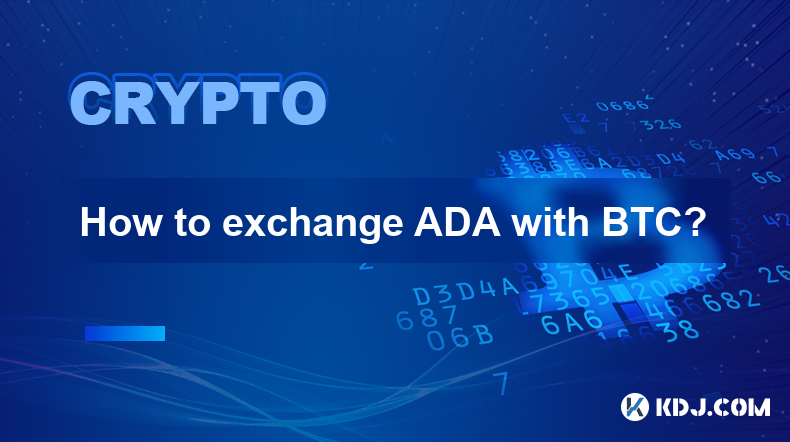
Exchanging Cardano (ADA) for Bitcoin (BTC) is a common transaction within the cryptocurrency space, and it can be done through various platforms. This article will guide you through the process step-by-step, ensuring you understand each part of the exchange process. Whether you're using a centralized exchange, a decentralized exchange, or a peer-to-peer platform, we will cover the essential steps and considerations.
Choosing the Right Platform
Before you begin the exchange process, it's crucial to select the right platform. Centralized exchanges like Binance, Kraken, and Coinbase are popular choices because they offer high liquidity and a user-friendly interface. Decentralized exchanges (DEXs) such as Uniswap or SushiSwap provide more privacy and control over your assets. Peer-to-peer platforms like LocalBitcoins allow you to trade directly with other users, often without the need for an intermediary.
To choose the right platform, consider the following factors:
- Security: Look for platforms with strong security measures, including two-factor authentication and cold storage for funds.
- Fees: Compare the trading fees and withdrawal fees of different platforms.
- Liquidity: Higher liquidity ensures that you can buy or sell your cryptocurrency quickly at the market rate.
- User Interface: A user-friendly interface can make the trading process smoother, especially for beginners.
Setting Up Your Account
Once you have selected a platform, the next step is to set up your account. Here’s how to do it:
- Visit the platform's website and click on the "Sign Up" or "Register" button.
- Fill out the registration form with your personal details, such as your name, email address, and a strong password.
- Verify your email address by clicking on the confirmation link sent to your inbox.
- Complete the KYC (Know Your Customer) process if required by the platform. This usually involves submitting a government-issued ID and a proof of address.
- Enable two-factor authentication (2FA) for added security. Most platforms support 2FA through apps like Google Authenticator or Authy.
Depositing ADA into Your Account
After setting up your account, you need to deposit ADA into your exchange wallet. Here’s how to do it:
- Navigate to the "Deposit" or "Wallet" section of the platform.
- Select ADA from the list of available cryptocurrencies.
- Generate a new ADA deposit address or use an existing one if you have already created one.
- Copy the deposit address and send your ADA from your personal wallet to this address. Make sure to double-check the address to avoid sending your funds to the wrong place.
- Wait for the transaction to be confirmed on the Cardano blockchain. This may take a few minutes to an hour, depending on network congestion.
Trading ADA for BTC
Once your ADA is deposited and confirmed, you can proceed to trade it for BTC. The process varies slightly depending on the type of platform you are using, but the general steps are as follows:
- Navigate to the trading section of the platform. This is usually labeled as "Trade," "Exchange," or "Market."
- Select the ADA/BTC trading pair. If you can't find it, you might need to trade ADA for another cryptocurrency first, such as USDT, and then trade that for BTC.
- Choose your order type. You can place a market order to buy BTC at the current market price or a limit order to set a specific price at which you want to buy BTC.
- Enter the amount of ADA you want to trade and review the transaction details, including the amount of BTC you will receive and any fees.
- Confirm the trade. Once confirmed, the exchange will execute your order, and the BTC will be credited to your account.
Withdrawing BTC to Your Wallet
After successfully trading your ADA for BTC, you'll want to transfer your BTC to a personal wallet for safekeeping. Here’s how to do it:
- Navigate to the "Withdraw" or "Send" section of the platform.
- Select BTC from the list of available cryptocurrencies.
- Enter the amount of BTC you want to withdraw.
- Provide the BTC address of your personal wallet. Make sure this address is correct to avoid losing your funds.
- Review the withdrawal fees and any other transaction details.
- Confirm the withdrawal. The platform will process your request, and the BTC will be sent to your personal wallet. This may take some time, depending on the Bitcoin network's congestion.
Additional Considerations
When exchanging ADA for BTC, there are several additional factors to consider:
- Volatility: Cryptocurrency markets are highly volatile. The price of ADA and BTC can fluctuate significantly within a short period, affecting the amount of BTC you receive.
- Transaction Speed: The speed at which you can complete the exchange can vary depending on the platform's liquidity and the blockchain's congestion.
- Regulations: Be aware of the regulatory environment in your country. Some regions have strict rules about cryptocurrency trading and may require you to report your transactions for tax purposes.
Frequently Asked Questions
Q: Can I exchange ADA for BTC without using a centralized exchange?
A: Yes, you can use decentralized exchanges (DEXs) like Uniswap or SushiSwap to exchange ADA for BTC. DEXs allow you to trade directly from your wallet without the need for an intermediary, offering more privacy and control over your assets.
Q: Are there any risks involved in trading ADA for BTC?
A: Yes, there are several risks to consider, including market volatility, platform security, and regulatory changes. Always use reputable platforms and enable security features like two-factor authentication to minimize these risks.
Q: How long does it take to exchange ADA for BTC?
A: The time it takes to exchange ADA for BTC can vary depending on the platform and the blockchain's congestion. Generally, the process can take anywhere from a few minutes to a few hours.
Q: Can I trade ADA for BTC on a mobile app?
A: Yes, many cryptocurrency exchanges offer mobile apps that allow you to trade ADA for BTC on the go. Make sure to download the app from a trusted source and enable all available security features.
Disclaimer:info@kdj.com
The information provided is not trading advice. kdj.com does not assume any responsibility for any investments made based on the information provided in this article. Cryptocurrencies are highly volatile and it is highly recommended that you invest with caution after thorough research!
If you believe that the content used on this website infringes your copyright, please contact us immediately (info@kdj.com) and we will delete it promptly.
- Bitcoin Price Surges: Golden Cross Signals a Potential Big Move
- 2025-07-21 16:30:12
- Bitcoin, Momentum, and the Great Reset: What's Next?
- 2025-07-21 17:10:13
- Hyperliquid Gears Up: Market Momentum Builds for HYPE
- 2025-07-21 16:30:12
- JasmyCoin (JASMY) Price Pumping: Is a 2x Rally Next?
- 2025-07-21 17:10:13
- XRP, On-Chain Activity, and Cloud Mining: What's the Buzz?
- 2025-07-21 17:50:12
- Crypto Whale Watch: Short Positions, Hedging, and the Hunt for Profit
- 2025-07-21 17:30:12
Related knowledge
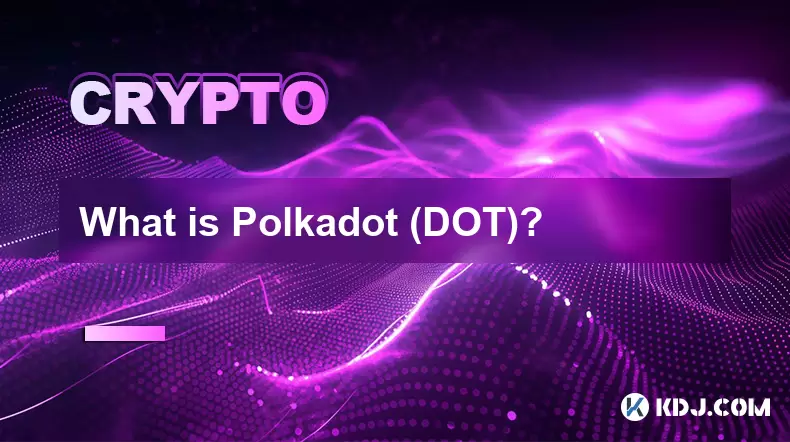
What is Polkadot (DOT)?
Jul 19,2025 at 06:35pm
Understanding the Basics of Polkadot (DOT)Polkadot (DOT) is a multi-chain network protocol designed to enable different blockchains to transfer messag...

What is Monero (XMR)?
Jul 21,2025 at 10:07am
What is Monero (XMR)?Monero (XMR) is a decentralized cryptocurrency designed to provide enhanced privacy and anonymity for its users. Unlike Bitcoin a...

How to add indicators to Ethereum chart on TradingView?
Jul 19,2025 at 07:15am
What Is an Ethereum Chart on TradingView?The Ethereum chart on TradingView is a visual representation of the price movement of Ethereum (ETH) over a s...
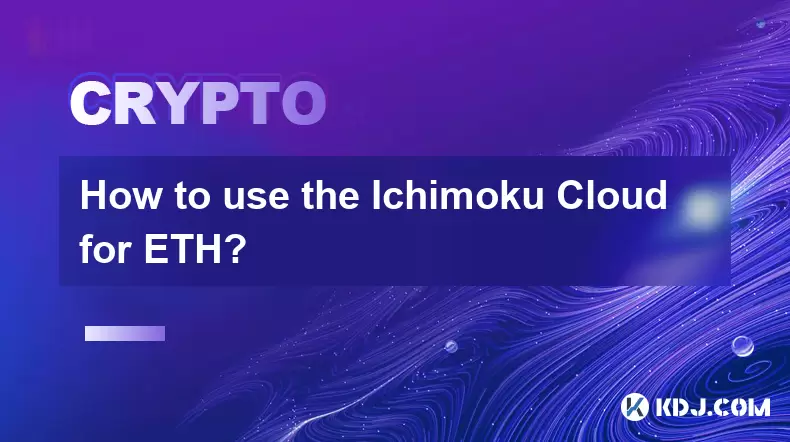
How to use the Ichimoku Cloud for ETH?
Jul 18,2025 at 09:56pm
Understanding the Ichimoku Cloud and Its ComponentsThe Ichimoku Cloud, also known as Ichimoku Kinko Hyo, is a versatile technical analysis tool that p...
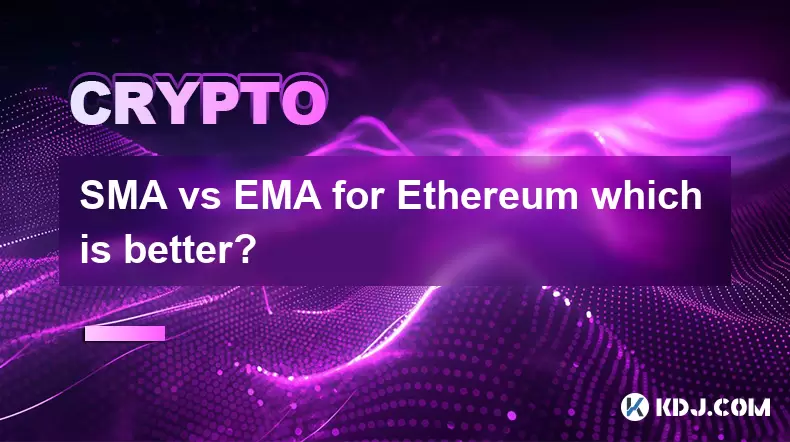
SMA vs EMA for Ethereum which is better?
Jul 19,2025 at 12:36am
Understanding the Basics of SMA and EMAIn the world of cryptocurrency trading, especially when dealing with Ethereum, technical indicators play a cruc...
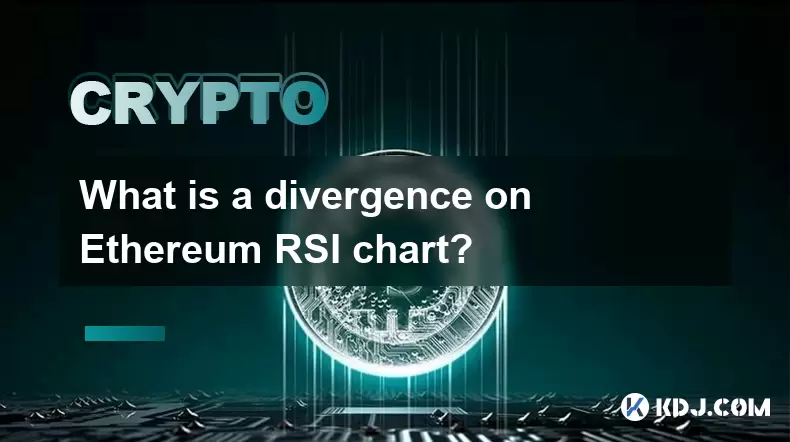
What is a divergence on Ethereum RSI chart?
Jul 21,2025 at 08:00am
Understanding the RSI IndicatorThe Relative Strength Index (RSI) is a momentum oscillator used in technical analysis to measure the speed and change o...

What is Polkadot (DOT)?
Jul 19,2025 at 06:35pm
Understanding the Basics of Polkadot (DOT)Polkadot (DOT) is a multi-chain network protocol designed to enable different blockchains to transfer messag...

What is Monero (XMR)?
Jul 21,2025 at 10:07am
What is Monero (XMR)?Monero (XMR) is a decentralized cryptocurrency designed to provide enhanced privacy and anonymity for its users. Unlike Bitcoin a...

How to add indicators to Ethereum chart on TradingView?
Jul 19,2025 at 07:15am
What Is an Ethereum Chart on TradingView?The Ethereum chart on TradingView is a visual representation of the price movement of Ethereum (ETH) over a s...

How to use the Ichimoku Cloud for ETH?
Jul 18,2025 at 09:56pm
Understanding the Ichimoku Cloud and Its ComponentsThe Ichimoku Cloud, also known as Ichimoku Kinko Hyo, is a versatile technical analysis tool that p...

SMA vs EMA for Ethereum which is better?
Jul 19,2025 at 12:36am
Understanding the Basics of SMA and EMAIn the world of cryptocurrency trading, especially when dealing with Ethereum, technical indicators play a cruc...

What is a divergence on Ethereum RSI chart?
Jul 21,2025 at 08:00am
Understanding the RSI IndicatorThe Relative Strength Index (RSI) is a momentum oscillator used in technical analysis to measure the speed and change o...
See all articles

























































































